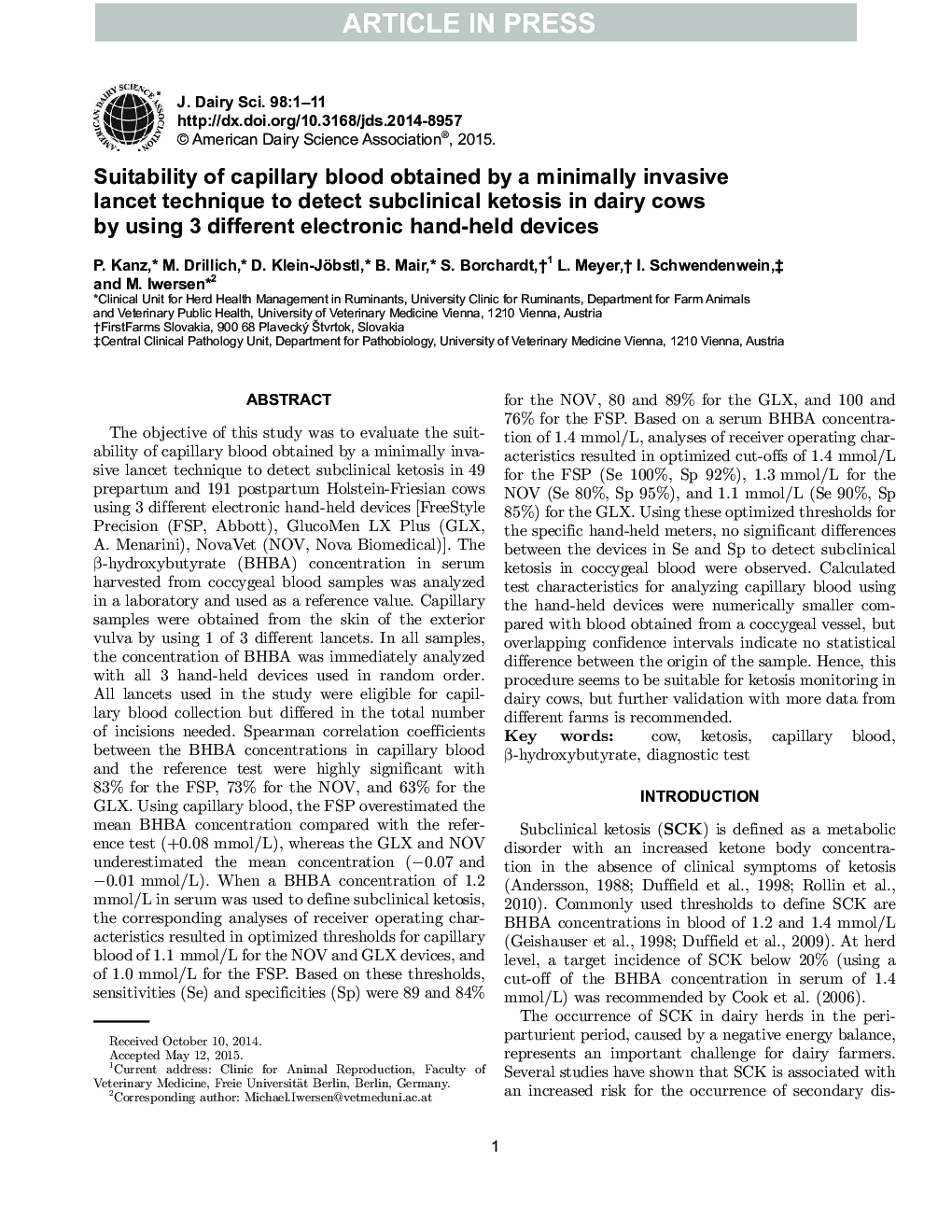| Article ID | Journal | Published Year | Pages | File Type |
|---|---|---|---|---|
| 10974313 | Journal of Dairy Science | 2015 | 11 Pages |
Abstract
The objective of this study was to evaluate the suitability of capillary blood obtained by a minimally invasive lancet technique to detect subclinical ketosis in 49 prepartum and 191 postpartum Holstein-Friesian cows using 3 different electronic hand-held devices [FreeStyle Precision (FSP, Abbott), GlucoMen LX Plus (GLX, A. Menarini), NovaVet (NOV, Nova Biomedical)]. The β-hydroxybutyrate (BHBA) concentration in serum harvested from coccygeal blood samples was analyzed in a laboratory and used as a reference value. Capillary samples were obtained from the skin of the exterior vulva by using 1 of 3 different lancets. In all samples, the concentration of BHBA was immediately analyzed with all 3 hand-held devices used in random order. All lancets used in the study were eligible for capillary blood collection but differed in the total number of incisions needed. Spearman correlation coefficients between the BHBA concentrations in capillary blood and the reference test were highly significant with 83% for the FSP, 73% for the NOV, and 63% for the GLX. Using capillary blood, the FSP overestimated the mean BHBA concentration compared with the reference test (+0.08 mmol/L), whereas the GLX and NOV underestimated the mean concentration (â0.07 and â0.01 mmol/L). When a BHBA concentration of 1.2 mmol/L in serum was used to define subclinical ketosis, the corresponding analyses of receiver operating characteristics resulted in optimized thresholds for capillary blood of 1.1 mmol/L for the NOV and GLX devices, and of 1.0 mmol/L for the FSP. Based on these thresholds, sensitivities (Se) and specificities (Sp) were 89 and 84% for the NOV, 80 and 89% for the GLX, and 100 and 76% for the FSP. Based on a serum BHBA concentration of 1.4 mmol/L, analyses of receiver operating characteristics resulted in optimized cut-offs of 1.4 mmol/L for the FSP (Se 100%, Sp 92%), 1.3 mmol/L for the NOV (Se 80%, Sp 95%), and 1.1 mmol/L (Se 90%, Sp 85%) for the GLX. Using these optimized thresholds for the specific hand-held meters, no significant differences between the devices in Se and Sp to detect subclinical ketosis in coccygeal blood were observed. Calculated test characteristics for analyzing capillary blood using the hand-held devices were numerically smaller compared with blood obtained from a coccygeal vessel, but overlapping confidence intervals indicate no statistical difference between the origin of the sample. Hence, this procedure seems to be suitable for ketosis monitoring in dairy cows, but further validation with more data from different farms is recommended.
Related Topics
Life Sciences
Agricultural and Biological Sciences
Animal Science and Zoology
Authors
P. Kanz, M. Drillich, D. Klein-Jöbstl, B. Mair, S. Borchardt, L. Meyer, I. Schwendenwein, M. Iwersen,
